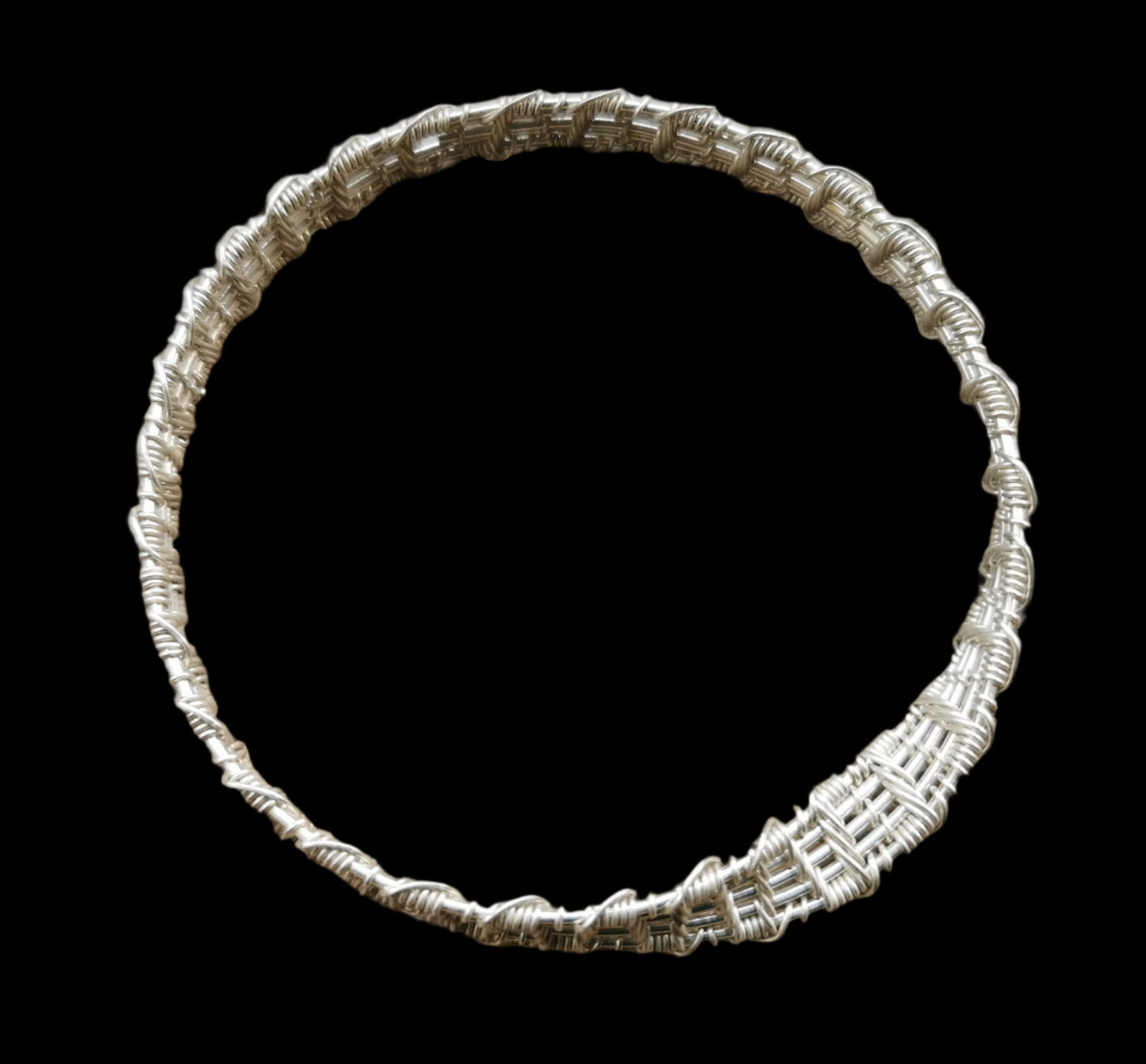Portal Glastonbury
Ref.BR0035
Ref.BR0035
Couldn't load pickup availability
Ref.BR0035 - Silver wire wrap Moebius, aka Möbius, bangle.
The Möbius strip (or band), a surface with a single side and a single boundary, discovered in 1858 by German mathematicians August Ferdinand Möbius and Johann Benedict Listing (but it had already appeared in Roman mosaics from the third century CE), carries profound symbolic significance due to its unique topological properties. This twisted loop—created by taking a strip, giving it a half-twist, and joining the ends—transcends its mathematical origins to embody concepts of unity, infinity, and paradox across various contexts. The Möbius strip is a non-orientable surface, meaning that within it one cannot consistently distinguish clockwise from counter clockwise turns. Every non-orientable surface contains a Möbius strip.
Symbolic Significance
Unity and Oneness: The Möbius strip’s most striking feature is its single continuous surface. Unlike a regular band with an inside and outside, tracing its edge or face reveals no separation—just one side. Symbolically, this represents wholeness and interconnectedness, suggesting that apparent opposites (like inner/outer, self/other) are illusions within a unified reality. It’s a visual metaphor for holistic systems where distinctions dissolve.
Infinity and Cyclicality: The strip’s endless loop, where you return to your starting point after traversing its entirety (albeit flipped), mirrors the concept of infinity. It symbolizes eternal recurrence—life cycles, time, or processes with no true beginning or end. This resonates with ideas of perpetual renewal, like seasons or personal growth, where endpoints loop back into origins.
Paradox and Duality: The half-twist introduces a paradox: a two-dimensional object behaving as one-sided in three-dimensional space. This embodies the reconciliation of opposites—light and dark, finite and infinite, order and chaos. It suggests that contradictions coexist within a single truth, challenging binary thinking and inviting a deeper, non-dual perspective.
Transformation and Perspective: Traveling along the strip flips your orientation without breaking continuity. Symbolically, this reflects transformation through experience—shifting viewpoints while remaining part of the same journey. It’s a reminder that change doesn’t sever identity but reconfigures it, aligning with personal evolution or enlightenment.
Broader Contexts
Philosophy and Spirituality: The Möbius strip echoes philosophies like Taoism, where reality transcends division. The Taoist yin-yang, with its interplay of opposites, finds a geometric cousin here—a single form holding tension and balance.
Science and Nature: Its structure appears in molecular chemistry (e.g., Möbius aromaticity) and physics (e.g., twisted electromagnetic fields), symbolizing nature’s knack for elegant complexity. It hints that the universe itself might fold contradictions into unity.
Art and Culture: Artists like M.C. Escher used it to explore perception, while it’s a staple in modern design (e.g., the recycling symbol) to signify continuity and sustainability. It’s a bridge between the tangible and abstract.
A quirky twist: the Möbius strip’s "one-sidedness" parallels human consciousness—seemingly divided into conscious and unconscious, yet fundamentally singular. Psychologists like Jung might see it as the psyche’s structure, looping through shadow and light without true separation.
In essence, the Möbius strip symbolizes unity beyond duality, infinite cycles, paradoxical harmony, and transformative continuity. It’s a quiet invitation to rethink boundaries and embrace the seamless flow of existence.
Size: 66mm/2.6in approx.


